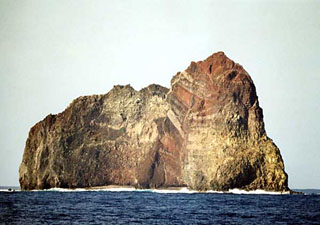Report on Sumisujima (Japan) — 18 September-24 September 2024
Smithsonian Institution / US Geological Survey
Weekly Volcanic Activity Report, 18 September-24 September 2024
Managing Editor: Sally Sennert.
Please cite this report as:
Global Volcanism Program, 2024. Report on Sumisujima (Japan) (Sennert, S, ed.). Weekly Volcanic Activity Report, 18 September-24 September 2024. Smithsonian Institution and US Geological Survey.
Sumisujima
Japan
31.44°N, 140.051°E; summit elev. 136 m
All times are local (unless otherwise noted)
According to the Japan Meteorological Agency (JMA) discolored water around Sumisujima was observed on 18 September during an overflight conducted by the Japan Coast Guard. An area of pale-blue to white discolored water extended about 1.8 km NW of the N coast of the island. A very small amount of grayish-white material was floating in the same area as the discolored water and along the W coast. At 1100 on 19 September JMA issued an “eruption warning” noting that an eruption could affect the surround waters of the island.
Geological Summary. Sumisujima (also known as Smith Rocks) is a steep-sided basaltic pinnacle that forms part of the outer southern flank of a 8-9 km submarine caldera that truncates a 20-km-wide seamount. The caldera was formed between about 60,000 and 30,000 years ago. The Shirane dacitic central cone, 3 km wide and 800 m high, rises to within 8 m of the ocean surface in the eastern side of the caldera, whose 600-700 m walls and outer flanks expose basaltic, andesitic, and rhyolitic rocks. Two large submarine cones, Sumisu Knolls No. 1 and 2, lie west of the caldera. Submarine eruptions have been reported from a number of locations near Sumisujima, the last of which occurred in 1916. Water discoloration has frequently been observed since the 1970's. In October 1992 a 6-km-long zone of discolored water was seen extending from the shallow Shirane rock mass near the eastern rim of the caldera, which rises to within 7 m of the ocean surface and is the youngest feature of the volcanic complex.

